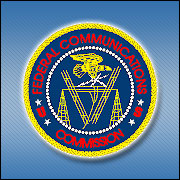
More Internet service providers are delivering on the download speeds they advertise, according to the United States Federal Communications Commission.
In a report released on Thursday, the FCC stated that tests conducted in April showed that more ISPs delivered their promised speeds, compared to tests conducted in August.
Further, ISPs as a whole are more consistent in their ability to deliver advertised speeds, and the difference between top performers and those at the bottom has narrowed.
Finally, consumers are subscribing to faster speed tiers and receiving faster speeds, the FCC said.
“There are pockets where there is dissatisfaction,” Matt Davis, a director at IDC, told TechNewsWorld. “If you get DSL off a long loop length, or are in a cable network neighborhood where the nodes haven’t been upgraded, you’re going to suffer.”
However, IDC’s surveys show that “by and large, U.S. consumers are pretty happy with the amount of speed and the quality of service they get off the broadband services now,” Davis remarked.
What the Feds Found
The FCC report reveals “striking across-the-board improvements” on key metrics underling user performance, the commission said.
Fourteen companies were monitored — AT&T, Cablevision, CenturyLink, Charter, Comcast, Cox, Frontier, Insight, Mediacom, Qwest, TimeWarner, Verizon Fiber, Verizon DSL and Windstream.
Their download speeds were measured both on a 24/7 basis and during peak hours — 7 p.m. to 11 p.m. Mondays through Fridays.
During peak hours, four ISPs hit or exceeded 100 percent of the download speed advertised. Cablevision and Verizon Fiber hit 120 percent, Comcast exceeded 100 percent, and Mediacom made 100 percent. In 2011 only two of the ISPs delivered 100 percent or more of the download speed advertised, the FCC said.
Charter, Cox and TimeWarner made close to 100 percent. AT&T, CenturyLInk, Insight, Qwest, Verizon DSL and Windstream exceeded 80 percent of advertised download speeds. Frontier, the slowest, came close to 80 percent.
The data were obtained in April using measurement hardware and software deployed in the homes of thousands of consumer volunteers to conduct automated, direct measurements of broadband performance, the FCC said. Three technologies — DSL, cable and fiber — were examined because they provide Internet service to the majority of U.S. homes.
Getting Better All the Time
Some ISPs that lagged furthest behind the leaders last year have improved remarkably, the FCC said. Cablevision, which delivered only about 50 percent during peak periods last year, was singled out for particular mention.
“As the largest ISP, we are proud to deliver more speed, more consistently to more homes than any other provider,” Cathy Avgiris, executive vice president and general manager of Comcast’s data and communications services, told TechNewsWorld. “We are proud of our performance and look forward to continuing to work with the FCC on this study.”
Only the most popular service tiers among an ISP’s offerings were tested, the FCC said. Further, the data was only analyzed at the national level, and the results only include measurement of the data path from the content source to the consumer. Bandwidth limitations or delays incurred in the consumer’s home or in segments of the Internet outside an ISP’s network aren’t reflected in the results.
Sucking Up the Kudos
The FCC contends that its August 2011 report helped prompt these changes and had a substantial impact on both the industry and on the consumer broadband experience.
However, “I don’t think [the improvement] has anything to do with what the FCC did a year ago,” IDC’s Davis remarked. “The arms race between cable companies and telephone companies is still on, and they continue to push each other.”
Broadband subscribers are “critical” because, if a carrier loses them, it “loses voice, opportunities to sell any kind of additional services, and now it’s turning into an opportunity to sell games,” Davis continued. “There’s very slow growth in broadband, so it’s turned into a trench warfare market share game.”





















































